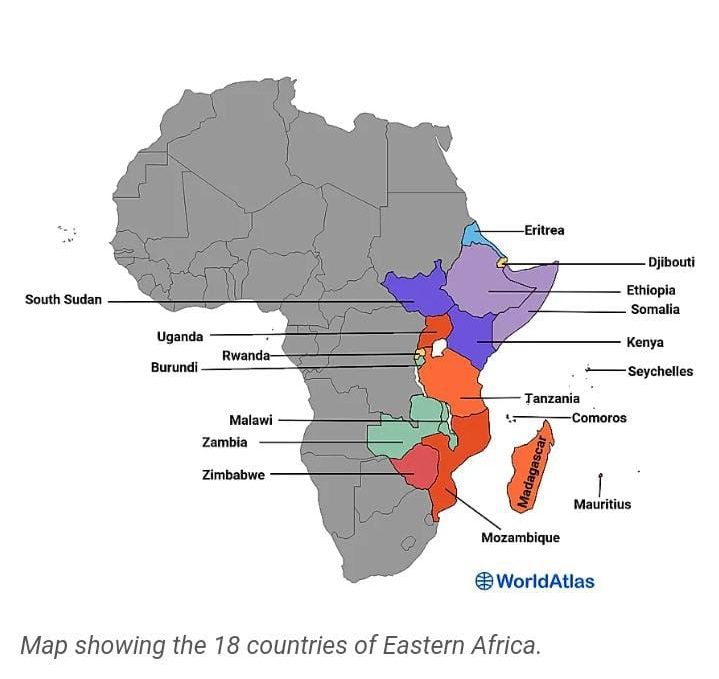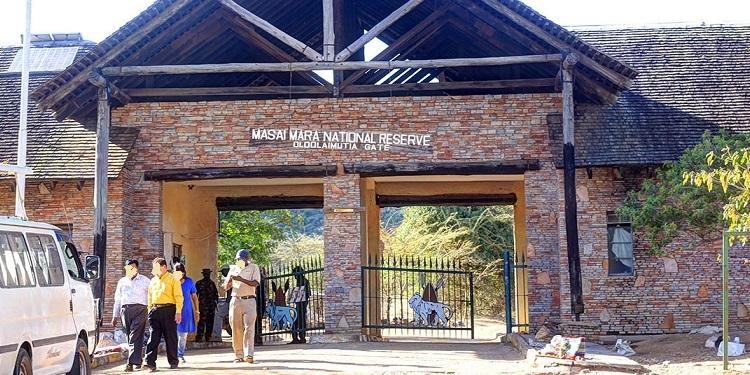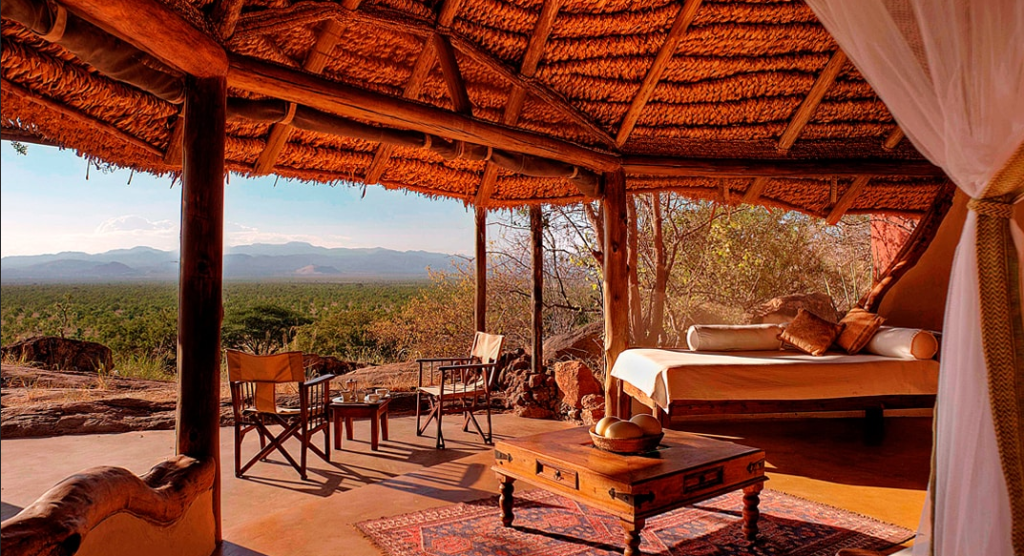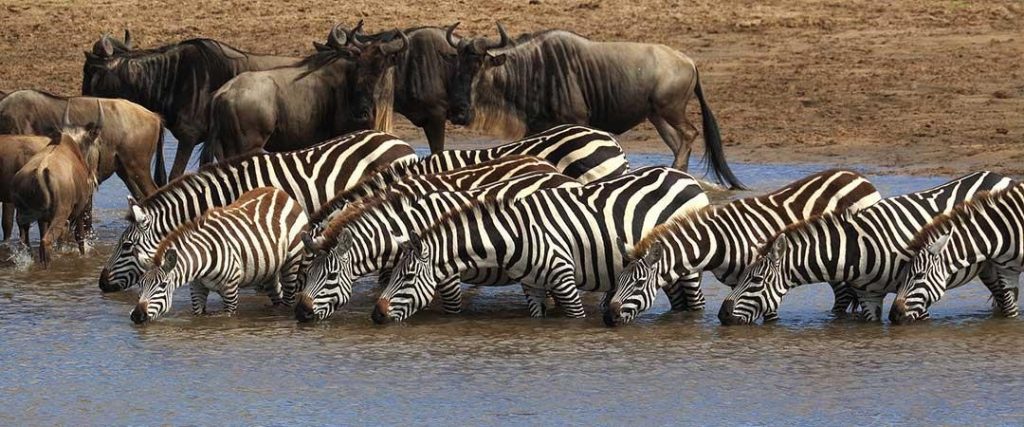Eastern Africa is home to 18 countries with a population of over 487 million people and over 200 ethnic groups.

This region covers part of Africa called the Horn of Africa. It stretches from the Indian Ocean coast to the Great Rift Valley and the highlands of Ethiopia, showing an astonishing array of landscapes, from savannas to highlands, plateaus, and coastal regions.
In this article, we set on a journey to explore the fascinating world of Eastern African greetings and their role in celebrating and preserving cultural diversity. In addition, we will briefly examine how modernization and globalization impact these practices in the region.
Understanding the Importance of Greetings in Eastern Africa
Greetings are an integral part of daily life in Eastern Africa. They serve as a way to acknowledge others and establish a connection. The Eastern African people emphasize greetings to show respect and build relationships.
The Function of Greetings in Social Interactions
Greetings in Eastern Africa go beyond just saying “hello.” They often involve a series of inquiries about one’s well-being, family, and other personal matters. Creating a sense of warmth and hospitality, fostering a deeper connection between individuals. They allow people to express genuine interest in one another and demonstrate care and concern.
For instance, in Uganda, greetings are not limited to a simple exchange of pleasantries. They are a chance to engage in meaningful conversations and share updates about one’s life. It is common for people to ask about each other’s work, hobbies, and even recent experiences. This engagement level during greetings helps strengthen social bonds and build a sense of community.
In Rwanda, greetings are considered a way to show respect and honor. When greeting someone, it is customary to bow slightly and use honorifics to address them. This practice reflects the Rwandan culture’s emphasis on hierarchy and respect for elders. Greetings in Rwanda are a casual exchange and a way to acknowledge each individual’s importance and role in society.
How Greetings Reflect Cultural Values
How greetings are conducted in Eastern Africa reflects the region’s cultural values. For example, in Ethiopia, greetings blend tradition and respect. They involve a handshake and a gentle touch on the shoulder or arm. This signifies a level of closeness and shows respect for personal boundaries.
In Kenya, greetings are seen as a symbol of unity and peace. People greet each other with warmth and enthusiasm, often using phrases like “jambo?” or “habari gani?” which mean “hello” and “how are you” respectively. These greetings embody the spirit of togetherness and community.
Tanzanian greetings, on the other hand, emphasize hospitality and warmth. The people of Tanzania greet others with a smile and a genuine interest in their well-being. They take the time to inquire about the health and happiness of each other’s families, further strengthening social bonds.
Another exciting aspect of greetings in Eastern Africa is body language. In countries like Burundi and Somalia, greetings often involve a gentle touch on the heart or chest, symbolizing sincerity and a genuine connection. This physical gesture adds a layer of meaning to the greeting, conveying emotions that words alone cannot express.
Examples of Ethnic Groups in Eastern Africa and How Their Greetings Show Cultural Diversity
1. Maasai

The Maasai people live in the Eastern Africa part of Africa. They belong to the Nilo-Saharaan people in Eastern Africa. They are found in Southern Kenya and Northern Tanzania. They hold their culture and traditions with much regard. Greeting in the Maasai culture is dependent on the gender and age of the person who is being greeted.
A boy (not yet circumcised) will greet the elders while bending their head, and the elder touches their head in return greeting. However, once the boy goes through circumcision, he becomes a warrior and a man. At this level, he is warranted to get a handshake.
On the other hand, a woman bends her head longer when greeting elders. Once she gets married and has kids, that is the moment she will be allowed to shake hands. However, a Maasai woman will always bend her head when greeting her father.
Lastly, the elderly in the Maasai community greet the children by spitting at them as a sign of a blessing. This happens especially when they have stayed a while before seeing each other.
2. Tigray

The Tigreans are found in Eritrea and Northern Ethiopia. They belong to the Semitic ethnic group. They greet each other differently according to age and level of closeness as part of their cultural diversity. Some Tigreans greet each other by bowing their heads and saying ‘Salaam,’ which translates to peace. When greeting elders, they offer their hands to show respect.
Others greet each other with a kiss on the cheek. This greeting applies to Tigreans who are very close to each other. Also, the greetings of a kiss apply to women to women and men to men. Not to the opposite gender. In addition, they prefer having close interpersonal distance when interacting with each other while maintaining eye contact. However, snapping fingers at someone is considered a high level of disrespect. When greeting elders, the Tigreans keep the conversation respectful. They also ask about the elder’s family, health, and life as part of respect. Titles are considered necessary as they use Mr. and Mrs. for married people.
3. Shona
They are the largest ethnic group in Zimbabwe. They belong to the Bantu group. Greetings for the Shona people are done according to age. The young people are expected to say hi to their elders. Therefore, if someone does not greet you first, they wait for you to make the first move since they are your elders.
The Shona greet each other with a firm handshake using their right hand. The handshake takes longer than most people are used to. In addition to the handshake, their culture involves including a clap after. The first person claps twice. While the other person responds with two claps in return. The clap is done differently by men and women. Men clap with their fingertips and palms touching, while women clap with their hands on an angle more like a golf clap. It is critical to note that men and women clap in a way that keeps their hands cupped so that they make an air pocket when clapping.
The Influence of Language on Eastern African Greetings
Language plays a vital role in shaping greetings across Eastern Africa. The two main languages, Swahili and the local indigenous languages, impact regional greetings differently.
The Impact of Swahili on Greetings Across Eastern Africa
Swahili, often regarded as the lingua franca of Eastern Africa, significantly influences regional greetings. Its widespread use allows people from different ethnic backgrounds to communicate better and understand each other. Swahili greetings bridge the gaps between various communities and contribute to the region’s cultural diversity.
The Role of Indigenous Languages in Shaping Greetings
While Swahili has a unifying effect, indigenous languages also play a crucial role in shaping greetings. These languages hold deep cultural and historical significance and are used to preserve traditions and identity. Indigenous languages contribute to the diversity of greetings in Eastern Africa, providing a unique glimpse into the rich heritage of each community.
The Future of Eastern African Greetings in a Globalizing World
As Eastern Africa becomes more connected to the global community, the future of traditional greetings faces certain challenges.
Preserving Traditional Greetings in the Face of Globalization
Globalization and modernization bring new ways of communication, making it crucial to preserve traditional greetings. Efforts must be made to educate younger generations about the significance of greetings in Eastern Africa and encourage the continuation of cultural practices. Balancing the need for progress with preserving heritage is key to maintaining the diversity and richness of Eastern African greetings.
The Interplay Between Modernity and Tradition in Eastern African Greetings
In the face of globalization, Eastern African greetings are evolving to incorporate modern elements while maintaining traditional values. Technology, such as mobile phones and social media, has influenced exchanging greetings. However, Eastern Africans are finding ways to adapt while maintaining the essence of their cultural customs. Modernity and tradition can coexist, ensuring the survival of Eastern African greetings in a changing world.
Conclusion
The diverse cultures define Eastern Africa, and greetings are vital to this diversity. Understanding the significance of greetings in Eastern Africa helps us appreciate the nuances of each culture and promotes a more inclusive and tolerant society. By valuing and preserving these traditions, we can celebrate and contribute to the cultural richness of Eastern Africa.




